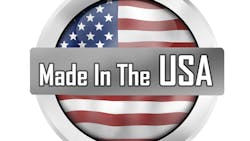Bringing it Back Home: How the Rebound in US Manufacturing is Reshaping Business
Today, American manufacturing has an opportunity for a comeback. Thanks to cheap and abundant energy supplies in the U.S., highly productive American workers, and demands for higher wages in developing markets, more businesses are choosing to turn the lights on at U.S. factories. Both manufacturing employment and industrial production have grown steadily over the past 12 months. Even major global manufacturers headquartered in Korea and China are locating operations in the U.S.
This is welcome news for Americans because it helps to build a stronger nation, but this trend could lead to even stronger businesses, both inside and outside the U.S. A resurgence in U.S. manufacturing can help global companies who do business in the U.S. – making them less vulnerable to sudden commodity price swings, more resilient in the face of geopolitical instability, more responsive to their customers in the U.S., more effective innovators, and more efficiently run overall. In short, the rebound of manufacturing in the U.S. could help companies become stronger.
The reason, in my view, stems partially from what was lost when corporations first began to move their manufacturing away from the U.S. in the off-shoring boom.
Many companies sought to take advantage of the lower labor costs in other markets. But over time, the difference between labor costs in the U.S. and elsewhere has diminished. In addition, the rise of advanced manufacturing means that a smaller share of the final cost of manufactured goods now can be attributed to labor. In this environment, a company looking to cut costs will need to focus more on materials and manufacturing process rather than labor
Finally, companies became highly dispersed, with management and governance in one location, production somewhere else and innovation even farther away. That meant that companies couldn’t always easily share ideas, monitor quality, or adapt quickly to changes in market needs or demand.
Now, companies are being given an opportunity to reshape the way they operate, simply because U.S. manufacturing is becoming more cost effective.
The key is to think beyond costs and consider the ways that manufacturing in the U.S. can unlock value, unleash innovation, and create opportunities for growth. Here are four key ways that manufacturing in the U.S. can achieve those outcomes.
-
It encourages companies to focus on value, not costs. In a global economy, there is value in operating in a market if it gives you greater access to a higher-value base for operations – whether because of the customers, the other operations of the company or the labor force. The U.S. is still the world’s largest consumer market. We still have the best hubs for innovation and research. We have a highly productive workforce. Those are all competitive strengths – and it’s a smart company that makes good use of them.
-
The U.S. drives and protects innovation. Startup businesses are often told: “Your clients tell you what business you’re in.” That can be true for manufacturers in the U.S., even those with decades of experience. Because U.S. consumers are both prosperous and choosy, they can drive manufacturers to be more innovative, more responsive, and more differentiated. Look at what’s happening in the auto industry today. We are seeing automakers – many of them – moving production to the U.S. We’re seeing the introduction of greater technology in U.S. vehicles at an accelerating rate. And because of the strong rule of law in the U.S., innovations are likely to stay protected for longer than in countries where protections around inventions and intellectual property are not as rigorous.
-
It will make companies better-run. One of the hallmarks of off-shoring has been highly dispersed management teams, with critical decisions being made thousands of miles away from production centers. While this approach can work, there is great value in closing the circle between operations, management, and governance. A revival of U.S. manufacturing -particularly when other organizational functions are also located in the U.S. - will likely remind companies of the advantages of grouping major capabilities in national and regional structures. Such an approach can be applied elsewhere.
- It is designed to be part of a broader global strategy. A move toward production in the U.S. doesn’t mean you abandon operations elsewhere. Far from it. A truly global company knows that it has to operate in many regions. Having a strong base in the U.S. will help meet competitive goals in one market, but you still need a strong team in the key growth markets in Asia, Latin America, Europe, and Africa. The key will be to build operations that have their own local, national, and regional focus – making them as responsive to their markets as U.S. operations are to the American market.
In short, the manufacturing comeback in the U.S. is good news for companies who know how to reshape their operations around high-value markets, innovation, and market-relevant strategies.

